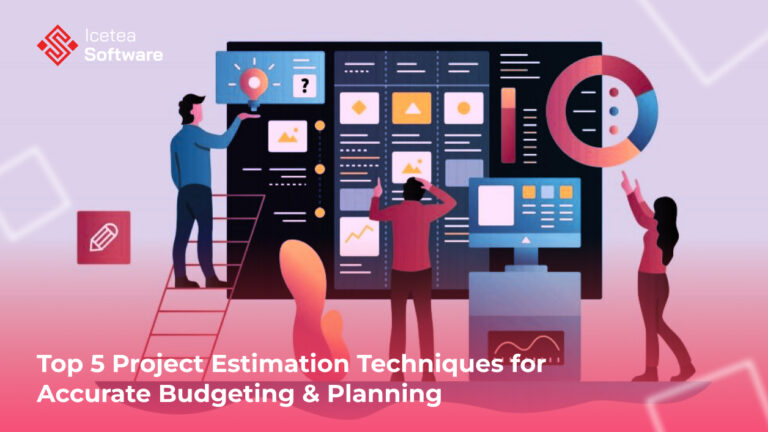Turn Your Software Vision into Reality: How to Build a Business Case That Gets Approved

In today’s fast-paced digital economy, companies are increasingly turning to custom software development to solve unique business challenges, optimize internal operations, and gain a competitive edge. However, before any lines of code are written, there’s one critical step that lays the foundation for project success: writing a solid business case.
A well-structured business case does more than justify the investment; it aligns stakeholders, defines value, minimizes risk, and serves as a strategic guide throughout the development lifecycle. Whether you’re convincing your leadership team, securing budget, or rallying support from different departments, a compelling business case can make or break your software initiative.
What is a Business Case?
A business case is a formal document or presentation that outlines the reasoning, justification, and benefits of initiating a project. In the context of custom software development, it details why a tailor-made solution is required, what outcomes are expected, and how the investment will generate business value.
When Do You Need a Business Case?
A business case becomes essential when:
- You’re proposing a significant investment in software
- Off-the-shelf solutions aren’t meeting your business needs
- You need to align stakeholders across departments
- You’re applying for budget approval or external funding
- You want to de-risk your project with strategic planning
1. Executive Summary
The executive summary is your first impression—it’s what draws stakeholders in, so it needs to be clear and compelling. Begin by briefly outlining the purpose of your custom software development project and clearly identifying the core problem(s) your organization is experiencing. Whenever possible, support your statements with relevant data to highlight the urgency or scale of the issue. Then, explain the measurable value the project is expected to deliver, and provide a brief overview of the project’s scope, major deliverables, and estimated timeline.
It’s also helpful to address the consequences of inaction. Highlight what could happen—or fail to happen—if the project isn’t pursued. Additionally, explain why existing commercial off-the-shelf (COTS) solutions fall short of your needs, and summarize any previous efforts made to address the problem.
Stakeholders will want to understand the strategic impact of the proposed solution. Emphasize how it can drive cost savings, revenue growth, and productivity improvements. Illustrate benefits like process automation, streamlined workflows, enhanced data management, and competitive differentiation, such as market expansion or improved customer experiences. If applicable, point to examples or case studies from similar initiatives to strengthen your case. Including a cost-benefit analysis can also reinforce the project’s financial soundness and return on investment.
2. Problem Statement
To fully grasp the problem at hand, it’s essential to examine how your current challenges are obstructing your organization’s broader strategic objectives. For instance, if one of your key goals is to boost customer retention but your existing technology infrastructure is failing to support even your current customer base, it’s crucial to investigate the root causes. This research should inform the foundation of your business case.
Clearly articulate the specific pain points your business is experiencing that custom software could resolve. In the example above, these might include issues such as unreliable customer data, limited digital channels for engagement and personalization, inefficient workflows, scalability constraints leading to customer dissatisfaction, integration problems causing duplicate data entry, or mounting competitive pressure.
Additionally, your business case should spotlight the potential advantages the new software could bring—whether it’s improving operational efficiency, elevating the customer experience, or unlocking new avenues for revenue growth.
3. Objectives and Goals
Lay out what the software project aims to achieve. Goals should be SMART: Specific, Measurable, Achievable, Relevant, and Time-bound.
Example Goals:
- Reduce manual invoice processing time by 70% in six months
- Improve customer onboarding experience with automated workflows
- Increase cross-sell opportunities through better data visibility
4. Proposed Solution
Explain why a custom software solution is the most suitable choice compared to alternatives (e.g., spreadsheets, existing tools, off-the-shelf software).
Include:
- High-level functionality/features
- Tech requirements or frameworks
- Customization needs
- Integration with existing systems
5. Project Scope
Define what’s in scope and what’s out of scope to set clear expectations.
In Scope:
- Web-based application for internal users
- Integration with ERP and payment gateway
Out of Scope:
- Native mobile apps
- Third-party user access
6. Stakeholders
List all the key stakeholders, decision-makers, and users involved. Define their roles and responsibilities to ensure alignment and accountability.
7. Timeline and Milestones
Provide a realistic project timeline with major milestones such as:
- Discovery and requirement gathering
- Design and prototyping
- Development phases
- QA testing
- Deployment
- User training
8. Cost Estimates
A key component of your business case involves presenting a clear breakdown of the total cost of ownership. Be sure to include:
- Development expenses: This covers the creation of custom software, including design, programming, testing, and rollout.
- Infrastructure expenses: Factor in costs for hosting, data storage, and necessary network capabilities.
- Maintenance expenses: Account for regular updates, issue resolution, and technical support.
- Training expenses: Include the cost of training staff to use the system effectively and maintain consistent adoption.
- By itemizing these elements, you’ll provide a realistic financial projection and offer a strong rationale for the proposed investment.
9. Benefits and ROI
To gain executive support, clearly demonstrate how the custom software investment will generate returns. Apply financial evaluation tools like Net Present Value (NPV), Internal Rate of Return (IRR), or Payback Period to illustrate potential profitability. Emphasize how the software will give your business a competitive edge and drive long-term growth. Define measurable success indicators—such as key performance metrics (KPIs) related to system performance, adoption rates, efficiency gains, cost savings, or improved customer satisfaction.
Outline a benefits realisation plan, including the expected timeline for achieving these benefits.
Include a summary of the funding requirements, detailing how and when the budget will be used to support both implementation and the transition into regular business operations.
Also, provide high-level, itemised cost estimates for project execution—covering internal or external resource needs, infrastructure setup, and ongoing maintenance—across the entire project lifecycle.
10. Risk Assessment
Every project has risks. Show that you’ve thought ahead by outlining:
- Apply robust project management frameworks such as Agile or Scrum to prevent scope creep and maintain project focus.
- Perform feasibility assessments to verify that the solution integrates smoothly with current systems.
- Incorporate security best practices throughout the development process and schedule regular security audits to ensure ongoing protection.
11. Recommendation
Present a clear timeline for the custom software development project, highlighting major milestones along the way. Divide the project into distinct phases—such as requirements analysis, system design, development, testing, deployment, and post-launch support. This structured approach allows stakeholders to clearly understand the project’s flow and anticipated deliverables.
Provide a realistic schedule that outlines critical deadlines and milestones. Specify the internal and external resources needed at each stage to ensure successful execution.
Final Thoughts
Crafting a solid business case for your custom software project is far more than a formality—it’s a strategic step that brings clarity to your vision, aligns your team, and paves the way for successful execution. It helps you communicate the value of your project, justify investment, and build confidence among key decision-makers.
A well-prepared business case doesn’t just secure approval—it lays the groundwork for a solution that’s delivered on time, within budget, and aligned with your business goals.
At Icetea Software, we’ve helped businesses across industries turn bold ideas into powerful, custom-built solutions. If you’re looking for expert guidance to shape your business case or map out a clear development path, our team is here to support you—every step of the way. Let’s bring your vision to life with precision and impact.
————————–
𝗜𝗰𝗲𝘁𝗲𝗮 𝗦𝗼𝗳𝘁𝘄𝗮𝗿𝗲 – Cutting Edge Technologies!
Website: iceteasoftware.com
LinkedIn: linkedin.com/company/iceteasoftware
Facebook: Icetea Software







